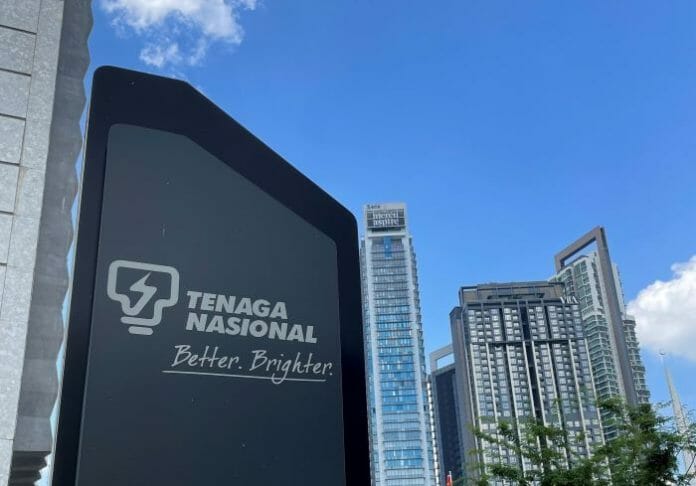TNB expects its Renewable Energy (RE) capacity to increase by 33% over the next 18 months based on projects on hand, taking it a step closer to achieving its 2025 target.
CGSCIMB views the earnings setback from negative fuel margins in 1H23 as transient in nature and expect the drag to narrow in 2H23F.
TNB remains one of CGSCIMB’s top picks and key beneficiary of the National Energy Transition Roadmap (NETR).
The research house reiterates an Add call with DCF-based TP of RM12.00 as TNB’s 2025 RE target is close to becoming a reality and a new demand sector driver.
In 2020, when TNB’s renewable energy (RE) capacity stood at 3,398MW, it had set itself a target of 8,300MW by 2025, alongside efforts to transition towards greener energy.
The pace of RE asset additions has been admittedly slow, growing by just 14% over the past 2.5 years. However, the company expects this to accelerate over the next 18 months as 1.2GW worth of projects come on stream, raising its RE portfolio by 33% to 5.3GW.
This also takes TNB closer to achieving its 2025 target and improves its RE generation capacity mix from 17% currently to ~23%, in our CGSCIMB’s estimates and they expect the recent establishment of a Green Lane Pathway, which aims to expedite time to market for data centres (DCs) that set up operations in Malaysia (from 36-48 months to 12 months), to become a new electricity demand growth driver.
DCs are deemed high-value customers as they consistently consume high volumes of electricity throughout the year and will serve to reduce the country’s currently high reserve margins (>40%) and also help alleviate pressure on electricity tariffs by optimising Malaysia’s generation assets better.
The company has already signed electricity supply agreements for 1,500MW with four players, with an additional five companies with ~2,000MW requirements in the pipeline.
Negative fuel margins a transient weakness
Quarterly coal prices have fallen sharply over the past 12 months, collapsing by 64% from a high of US$413/MT in 3Q22 to US$147/MT QTD (Fig 3). Accordingly, TNB’s earnings were weighed down by negative fuel margins in 1H23 (RM566m) given the timing mismatch between calculations of energy payments vs. actual fuel cost consumed.
While clearly a setback, CGSCIMB expects the lumpy fuel margin drag to narrow in 2H23F as coal prices have normalised to a large extent and the sharp movements appear to have receded, which should minimise the mismatch.
With resultant higher-than-expected OPEX in 1H23, CGSCIMB cuts their FY23F net profit forecast by 20% to factor this in while our FY24F/FY25F is reduced by a smaller 3%, while the DCF-based TP remains at RM12.00 (WACC: 8.3%;TG:1.5%) as their longer-term forecasts are largely unchanged.
TNB is a key beneficiary of NETR; one of our top picks in Malaysia
The NETR offers TNB upside potential from: 1) incremental fees for the usage of its transmission grid and distribution network for RE, which TNB estimates will entail energy transition-related capex of RM35bn over FY25-30F; 2) incremental revenues from wheeling charges for cross-border electricity exports; and 3) increased RE plant-ups domestically, which could further accelerate its energy transition ambitions. Key downside risks: sharp fluctuations in fuel prices and unfavourable regulatory changes.









